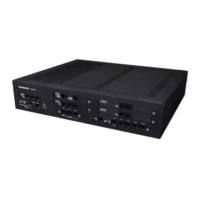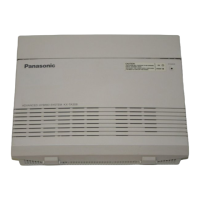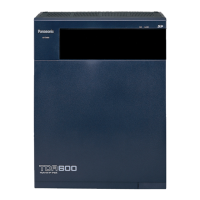ISDN-QSIG (PBX Direct Connection)
Each QSIG port of a BRI or PRI card that will be used to transmit extension status information must be set
to do so through system programming. Even if a port is set to not transmit information, it will still receive
information from other PBXs.
® 9.27 PBX Configuration—[1-1] Configuration—Slot—Port Property - BRI Port—ISDN CO—
Networking
Data Transfer
® 9.28 PBX Configuration—[1-1] Configuration—Slot—Port Property - PRI Port—CO Setting—
Networking Data Transfer
Transmit
Extension Status Information Functions
Enabled
• Transmit information on own PBX extensions
• Receive information from other PBXs; forward it to other QSIG ports of
the PBX
• Re-transmit information received by other QSIG ports of the PBX
Disabled
• Receive information from other PBXs; forward it to other QSIG ports of
the PBX
Set the transmission setting for each port according to the layout of your network, so that extension status
information can travel between NDSS monitor PBXs.
[Example ISDN Network Port Setting]
IP-Gateway-QSIG
IP data is routed through the network according to the routing tables of the V-IPGW cards. When using
VoIP, it is necessary to identify the monitor PBXs, to which to transmit extension status information, for
each card that will be used. This is done by specifying the extension number of any extension (for example,
the PBX operator) at the monitor PBX as a Network Operator extension for that V-IPGW card.
Feature Guide 405
4.3.5 QSIG Enhanced Features

